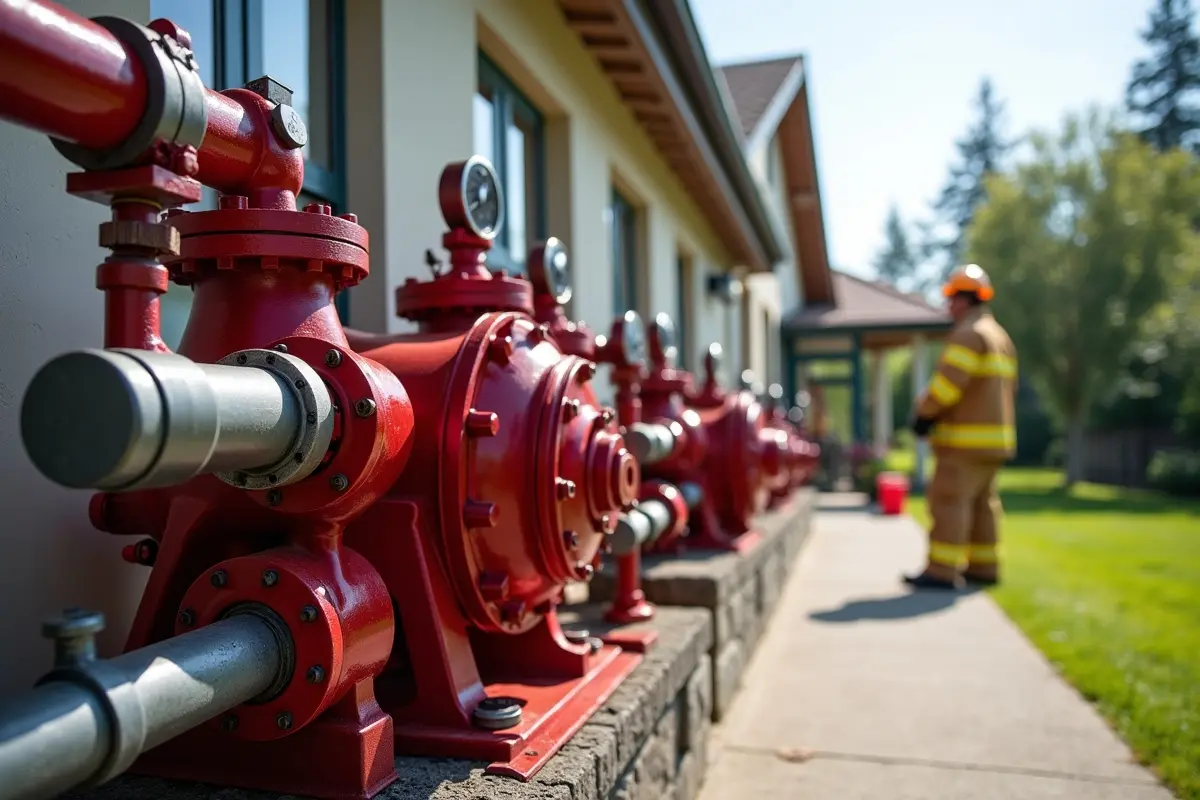
Choosing the Right Fire Fighting Pump for Your Commercial Property
Fire safety is a crucial concern for any commercial property. Having the proper equipment on hand, particularly a well-suited fire-fighting pump, can make a significant difference in protecting your building, employees, and assets. But with various types and models of pumps available, how do you know which one is the right choice for your property?
Contents
1. Understand the Different Types of Fire Pumps
There’s no one-size-fits-all fire pump. Depending on your building and fire risk level, you’ll need to choose the type that meets your specific needs.
Here’s a brief rundown of the most common types of fire-fighting pumps:
- Centrifugal Pumps – These pumps are the most commonly used for fire fighting. They are reliable, simple to maintain, and offer a high flow rate, making them ideal for large commercial properties.
- End Suction Pumps – These pumps are smaller and more compact, making them perfect for smaller properties or areas where space is limited.
- Vertical Turbine Pumps – Best suited for locations with a water source below ground, like a reservoir or a lake. They can lift water from deep sources, making them ideal for commercial properties near natural water supplies.
- Positive Displacement Pumps – Used when high pressure is needed rather than a high volume of water. These pumps are generally more expensive and are used in specific situations where pressure is key.
- Multistage Pumps – These are suited for high-rise buildings or properties that need a significant amount of pressure to distribute water across multiple floors.
2. Assess Your Water Source
Your water source plays a massive role in choosing the right pump. Does your property have access to a reliable water supply, like a nearby lake, tank, or mains water? Or will you need to rely on water storage tanks?
For example, if your property is in an area prone to drought or has limited access to mains water, a vertical turbine pump could be the ideal solution as it can draw water from underground sources. On the other hand, if your building is connected to a consistent and high-pressure water supply, you may not need such a powerful pump.
Consider how much water your pump will need to move in case of a fire. The larger the property, the higher the water flow rate should be.
3. Evaluate Your Building’s Size and Layout
The size and layout of your commercial property directly affect the sort of fire fighting pumps Melbourne that are going to be right for you. Are you managing a sprawling factory, a high-rise office building, or a smaller, single-storey structure? Each of these will have different needs.
Larger properties or those with multiple floors might require a multistage pump to ensure water is delivered with sufficient pressure to all areas. High-rise buildings often face challenges getting water to upper floors, so pressure becomes more of a concern here than flow rate. On the flip side, a small retail outlet will need a pump with lower pressure and a smaller flow rate.
4. Compliance with Local Regulations
Fire safety regulations can vary significantly between states and local councils. Ensuring compliance with these regulations is not just about avoiding fines – it’s about the safety of your property and the people in it.
Check the fire safety requirements in your area to determine what specifications your fire pump needs to meet. These requirements often include minimum flow rates, pressure levels, and the types of pumps allowed for different commercial applications. Engaging a local fire safety consultant can be helpful in navigating these regulations and ensuring your system is compliant.
5. Look at Fuel Source Options
Fire-fighting pumps can be powered by electricity, diesel, or petrol. Your choice of fuel source will depend largely on your commercial property and the reliability of your power supply.
- Electric Pumps – These are typically the easiest to maintain and operate, but if your property is at risk of power outages (especially during a fire), they might not be the best option.
- Diesel or Petrol Pumps – These pumps are excellent for backup purposes or areas where power might be unreliable. However, they do require more maintenance and need to be stored safely to avoid fire risks themselves.
Choosing the right fuel source ensures your pump will be ready to operate when needed, even if the power goes out.
6. Budget Considerations
Budget is always a factor when investing in fire safety equipment. While it’s tempting to go for the cheapest option, fire-fighting pumps are not something you want to cut corners on. Consider this purchase as a long-term investment in the safety of your business.
Think beyond just the initial cost. Maintenance, fuel, and compliance costs should also be factored into your decision. A diesel pump, for instance, might cost more upfront but could save you money in an emergency if it prevents a fire from escalating due to a power outage.
Making the Right Decision
Choosing the right fire-fighting pump isn’t just about following regulations; it’s about ensuring the safety of your employees, customers, and property. By understanding your building’s layout, water source, and local requirements, you can make an informed decision that protects your business in the event of a fire.
Take your time in assessing your options, and consult with a fire safety professional if needed. After all, this is an investment in safety that could make all the difference in an emergency.


